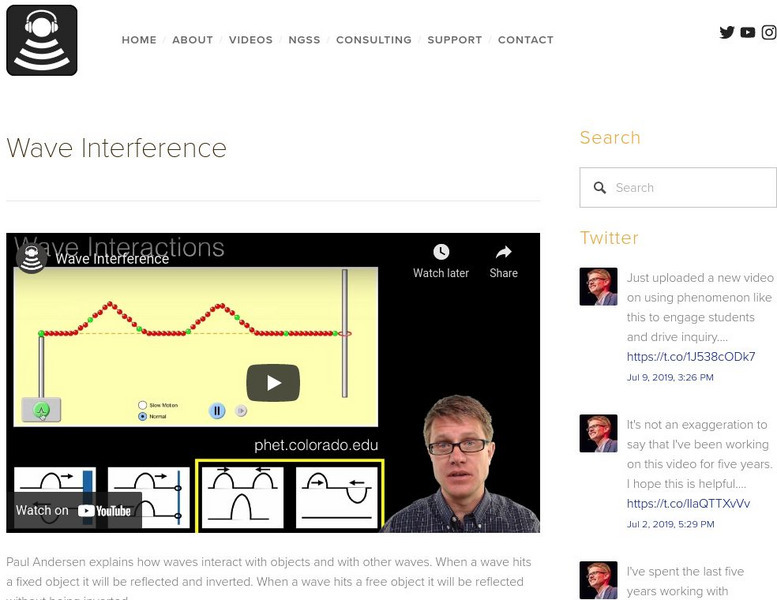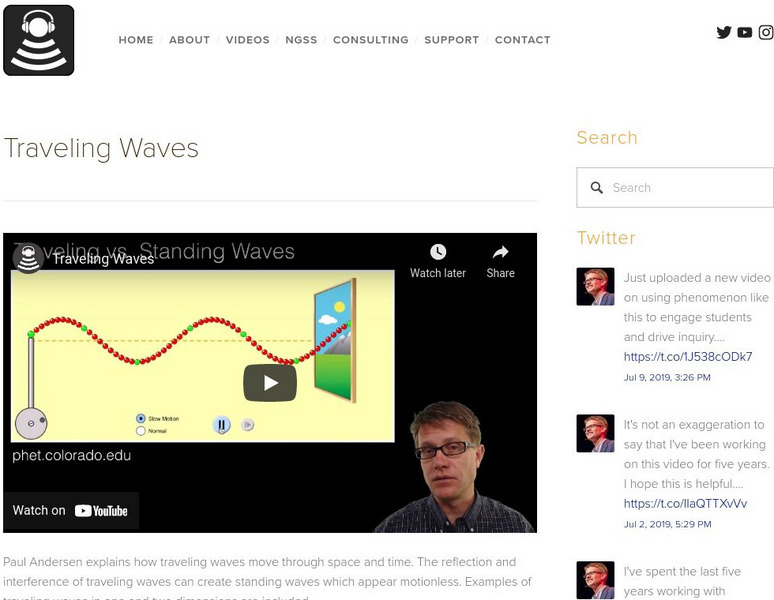Flipping Physics
Standing Waves Introduction
Reflection with and without inversion caused by fixed and free ends are demonstrated. Standing wave patterns at 5 different frequencies are demonstrated. A standing wave animation is shown to understand to how standing wave patterns are...
Bozeman Science
Bozeman Science: Physics: Wave Interference
Paul Andersen explains how waves interact with objects and other waves. When a wave hits a fixed object, it will be reflected and inverted. When a wave hits a free object, it will be reflected without being inverted. [6:24]
Bozeman Science
Bozeman Science: Physics: Interference Patterns
In this video, Paul Andersen explains how constructive and destructive interference can create interference patterns. Interference patterns can be created by all types of waves, including water, sound, and light. A classic experiment...
Bozeman Science
Bozeman Science: Wave Superposition
Paul Andersen explains how waves interact when moving through one another. Unlike particles waves can interfere both constructively and destructively. The amount of interference is determined through the superposition principle and can...
Bozeman Science
Bozeman Science: Traveling Waves
Paul Andersen explains how traveling waves move through space and time. The reflection and interference of traveling waves can create standing waves which appear motionless. Examples of traveling waves in one and two dimensions are...
Bozeman Science
Bozeman Science: Standing Waves
Paul Andersen explains how standing waves are created through the reflection and interference of traveling waves. Destructive interference creates areas of no movement called nodes. Constructive interference creates areas of maximum...
Bozeman Science
Bozeman Science: Beats
In the following video Paul Andersen explains how beats are created through interference of waves with similar frequencies. The changes in amplitude are caused by destructive and constructive interference. The frequency of beats is equal...






